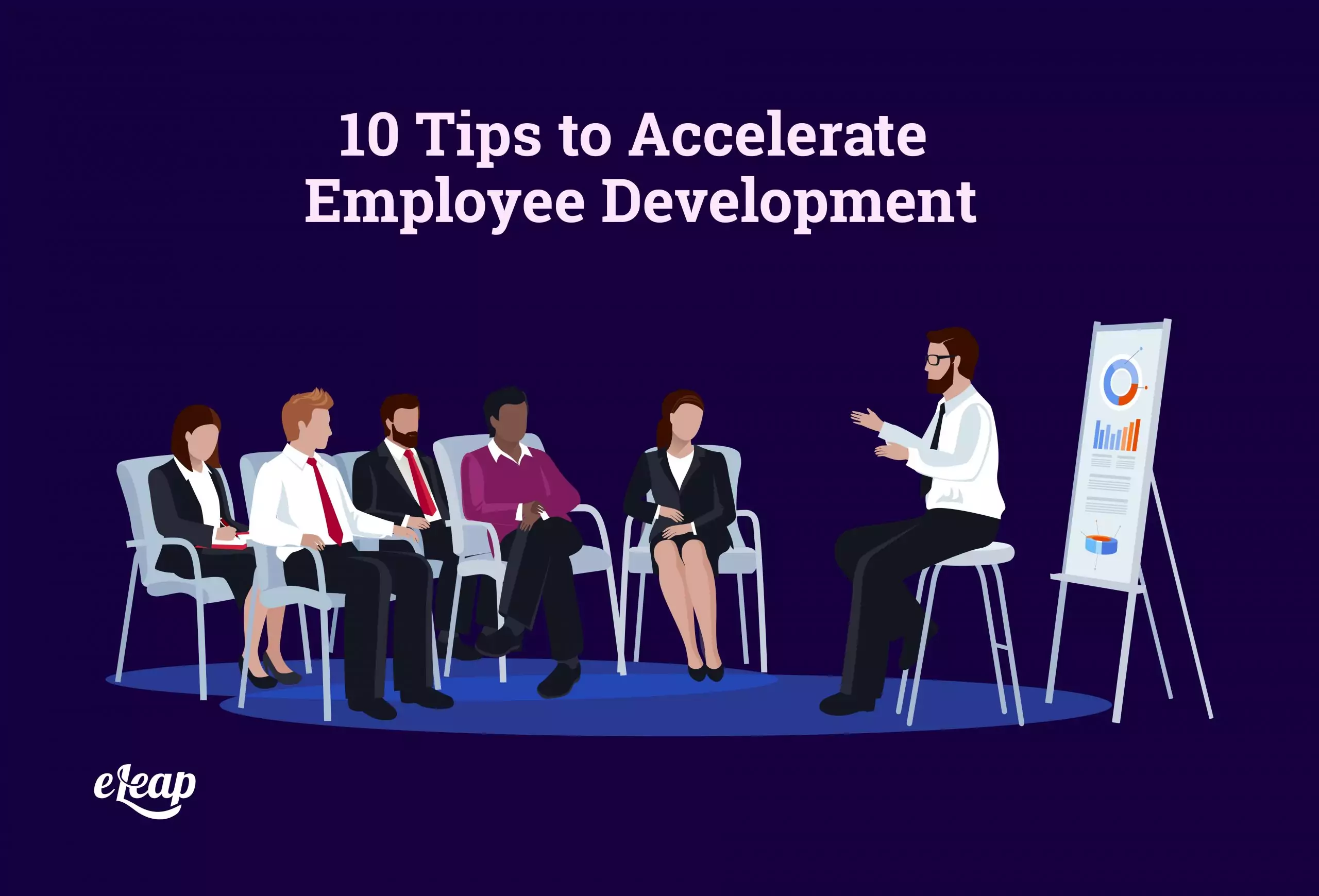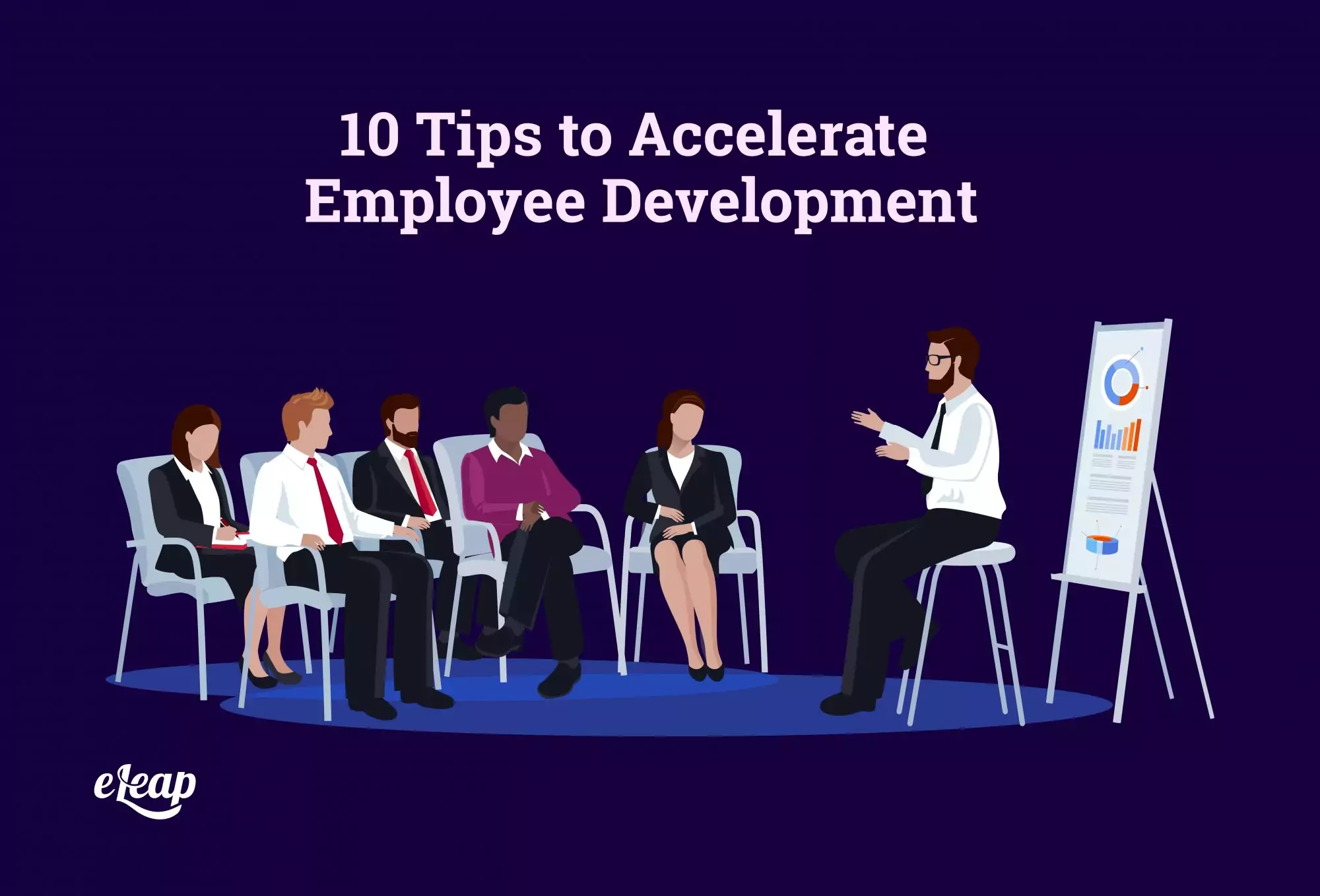10 Tips to Accelerate Employee Development

Employee development is the foundation of success for your entire organization. This is how you close skill gaps, retain key talent, and help people grow into new positions. However, it can be a slow, laborious process at times. You must put in place a plan to accelerate employee development if you want to be able to compete effectively in today’s marketplace.
It does not have to be that way, though. While your employees will always need to put forth the effort required to develop themselves through your LMS and other learning initiatives, there are things that leaders can do to help accelerate employee development. In this post, we will discuss 10 critical tips to achieve that goal.

1. Connect Development with Performance Management
Performance management and L&D might seem like two different focuses, but the truth is that they are deeply interrelated. So, your first step will be to connect development with performance management. How do you do that? There are several steps, but the most important is to have regular check-ins and one-on-ones.
With ongoing, frequent communication, it becomes possible to help guide employee development by focusing on real-world occurrences. For instance, when an employee makes a mistake or handles a situation incorrectly, raise the topic during a one-on-one, and then connect the discussion with content in your LMS that will help them develop the skills necessary to change the situation.
2. Recognize Accomplishments
Another important tip is to recognize the accomplishments of your employees. This applies to all areas of your relationship. Recognize their performance in the business, but you should also recognize their achievements in terms of learning and development. You can do this with leaderboards, high scores, and other gamified elements that encourage people to learn more.
3. Connect the Dots
If you really want your people to accelerate their development, show them what’s in it for them. Help them connect the dots between learning and development initiatives and their career development. Each module should be mapped to some aspect of their career path, providing a defined way forward and a direct relationship between learning content and professional goals.
4. Ease Their Way
It can be challenging to cram in both work responsibilities and learning during a regular workday. That adds stress and creates resentment. Employees automatically want to disconnect from anything they feel is “extra”. You can get around that by easing their way and making it possible for them to learn when it works best for them, whether they’re on the job or during their off time.
5. Make It Collaborative
Most people learn better as part of a group. We’re social animals and a collaborative environment supports better understanding. You can help your learners by making some elements of the learning process as collaborative as possible, such as creating forums and message boards, encouraging group learning, and helping to make mentorships possible.
6. Make It Challenging
While learning should not present insurmountable obstacles, it also should not be “a walk in the park”. Humans need challenges. We need the mental stimulation that comes from really having to think around corners. Make sure that your L&D content fits the bill. It should force your employees to challenge their assumptions and set aside what they think they know while providing them with new information that helps build skills and capabilities.
7. Break Out of the LMS
While an LMS like eLeaP is a powerful tool that can foster accelerated employee development, it also helps if you take your learning out of the LMS from time to time. What does that mean? Simply put, it means that you need to find ways to take learning objectives and embed them in real-world situations. This is where employees will be able to put theory into action and really use the skills they have developed. By doing so, you verify that they have truly absorbed the information and that they can connect theory work with actions in the physical world.
8. Give Feedback
Feedback is critical to employee development. Make sure that your LMS provides the ability to track employee performance, as well as to give them feedback, offer help, and provide support for those learners who might be struggling with certain modules or topics. Keep feedback positive and supportive, and ensure that it is focused on the challenge at hand.
9. Invest in Cross-Departmental Training
Most of the time, employees train in skills they will need for their immediate job, as well as for desired roles within the company. However, you can encourage accelerated learning by implementing cross-departmental training. This allows you to cross-train employees from different departments, create redundancies to ensure work can continue if key employees are absent, and build confidence in workers by helping them master new skills and areas of expertise.
10. Take a Hard Look at Your Culture
Our final tip has nothing to do with your learning management system or specific types of training. Rather, it focuses on the core of your organization – its culture. If your organization has a culture that does not value learning and growth, then nothing you do is going to make an appreciable difference.
You will need to fix your culture before doing anything else. It is critical to create a culture that values learning, that sees the value in experimentation even if the experiment fails, and that fosters a sense of psychological safety for your employees. Only then can you truly begin to accelerate employee development.
Moving Forward
Accelerating employee development is possible. It may not be simple, though. This is particularly true if your corporate culture needs some adjusting. Making a deep change like this requires intentional effort and commitment, as well as an understanding of where you need to go. The good news is that once you change your culture, the other tips we discussed here become easier to implement.
It is also important that you have the right systems in place to support accelerated employee development. A modern, cloud-based LMS is crucial. Without a system like eLeaP in place, you’ll find it much more challenging to develop your talent.